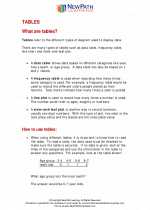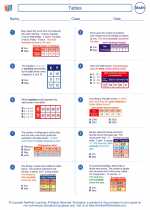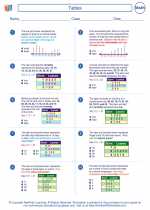Counting
Counting is the process of determining the number of elements in a set or group. It is a fundamental concept in mathematics and is used in various mathematical operations and problem-solving situations.
Counting Basics
To understand counting, it's important to grasp the basics of counting and numbers. Here are a few key concepts:
- Counting Numbers: These are the numbers used for counting, such as 1, 2, 3, 4, and so on.
- Cardinal Numbers: Cardinal numbers represent the quantity of objects in a set. For example, the cardinal number of a set with three apples is 3.
- Ordinal Numbers: Ordinal numbers indicate the position or order of something in a sequence, such as first, second, third, and so on.
Counting Techniques
There are various techniques for counting, depending on the complexity of the problem. Some of the common counting techniques include:
- One-to-One Correspondence: This technique involves pairing each object in one set with an object in another set to determine the total number of objects.
- Counting by Multiples: This method involves counting by a certain number of items at a time to find the total count.
- Counting Principle: The counting principle is used to find the total number of outcomes in a sequence of events by multiplying the number of choices at each step.
- Permutations and Combinations: These advanced counting techniques are used to calculate the number of arrangements and selections of items from a set, respectively.
Practice Problems
Here are some practice problems to test your understanding of counting:
- Count the number of ways to arrange the letters in the word "MATH".
- If you have 5 red marbles, 3 blue marbles, and 4 green marbles, how many different combinations of marbles can you choose if you pick 2 marbles at random?
- In a race with 10 participants, how many different ways can the top 3 positions be filled?
Counting in Real Life
Counting is not just a mathematical concept; it is also an essential skill in everyday life. From counting money to keeping track of inventory, counting plays a vital role in various real-life situations.
By mastering counting techniques and principles, you can develop a strong foundation for more advanced mathematical concepts and problem-solving skills.
.



